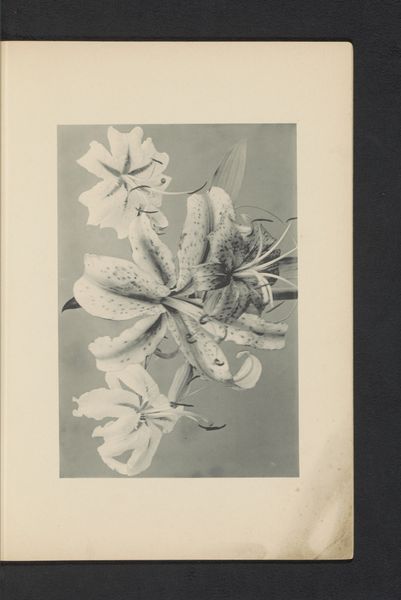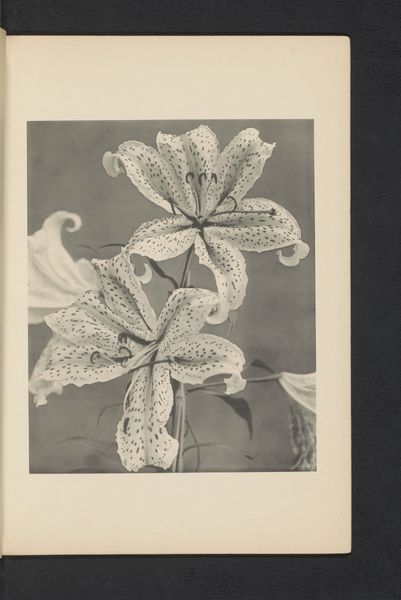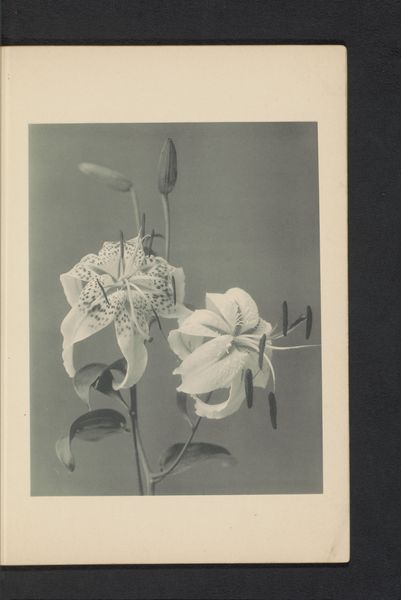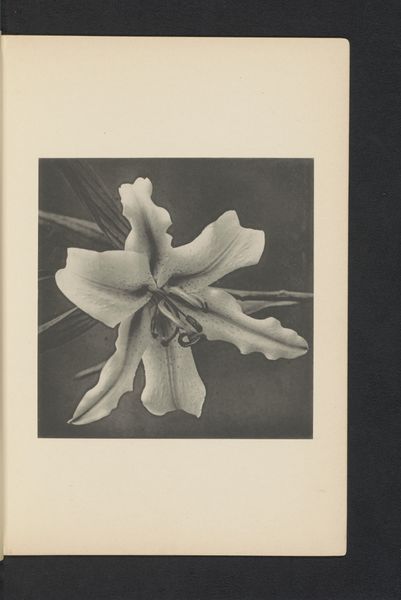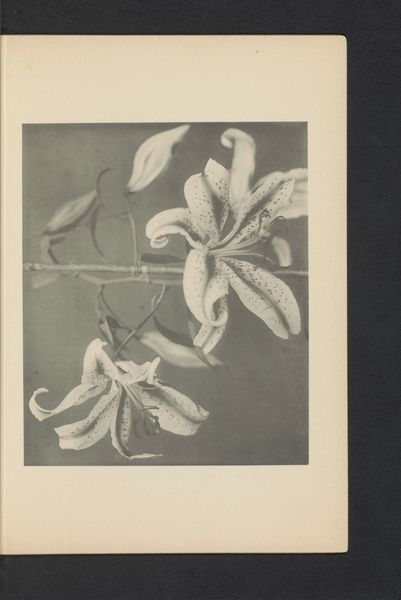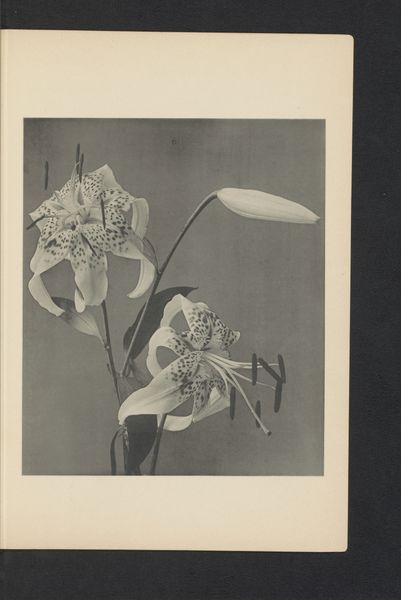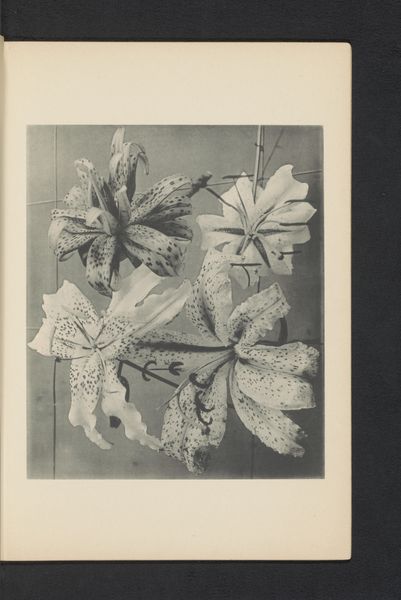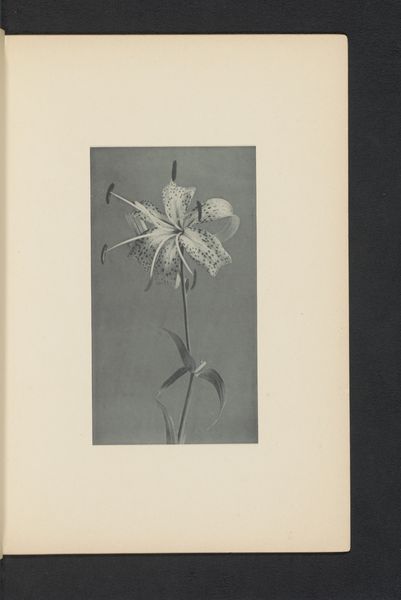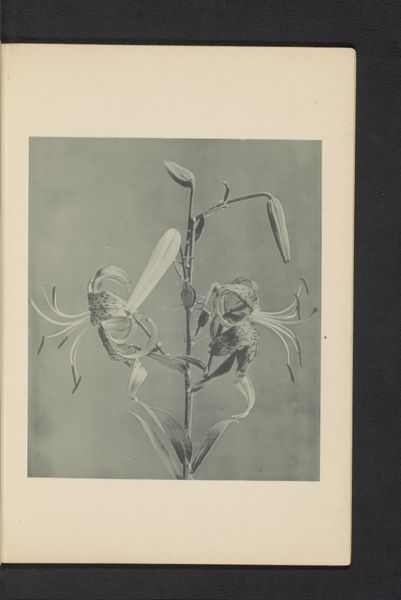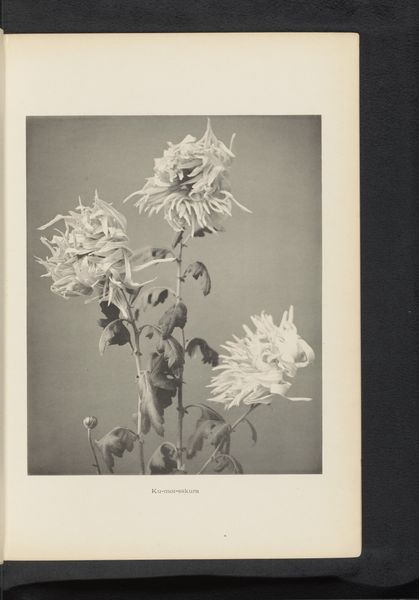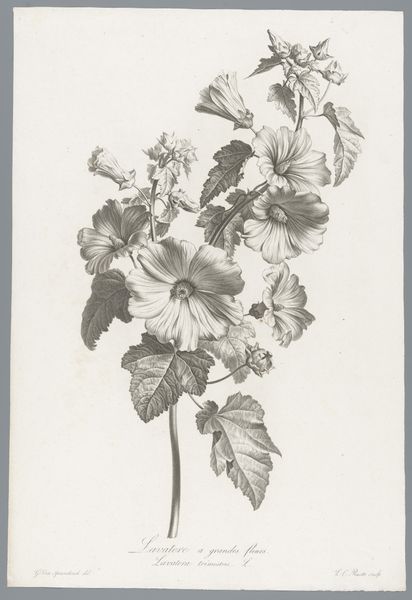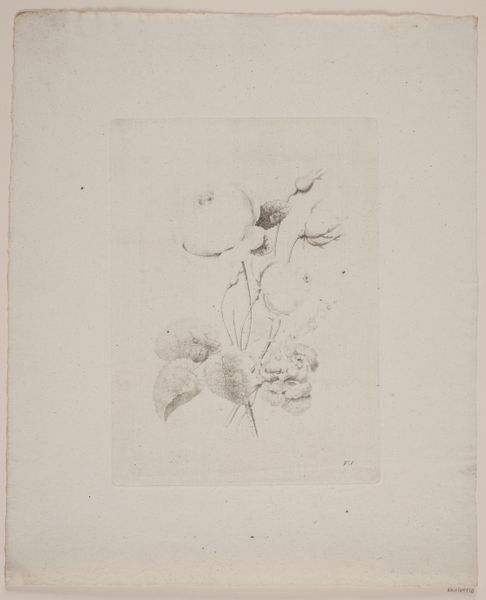
Dimensions: height 213 mm, width 260 mm
Copyright: Rijks Museum: Open Domain
This is Kazumasa Ogawa's ‘Japanse lelie’. Ogawa was a pioneer of photography and printing techniques in Japan during the Meiji era, a period of rapid modernization and Westernization. Ogawa's choice to photograph the Japanese lily, or "Lilium speciosum," is not accidental; it reflects the Japanese aesthetic appreciation for natural beauty, known as "wabi-sabi," which finds beauty in imperfection and impermanence. Through his lens, Ogawa immortalizes the delicate details of the lily, highlighting its elegance and grace. Ogawa documented the changing landscapes and cultural shifts happening in Japan. The black and white medium creates a timeless quality, inviting viewers to contemplate the intersection of tradition and modernity. Ogawa was part of a generation navigating these intricate cultural dynamics, and his work offers a glimpse into Japan's complex identity during this transformative period. Here, the lily becomes a symbol of Japan, standing between the past and the future.
Comments
No comments
Be the first to comment and join the conversation on the ultimate creative platform.
